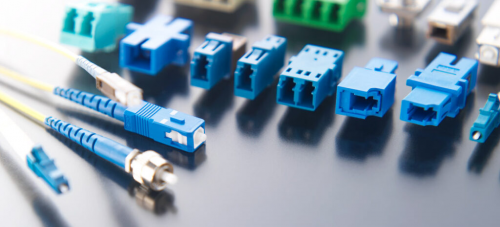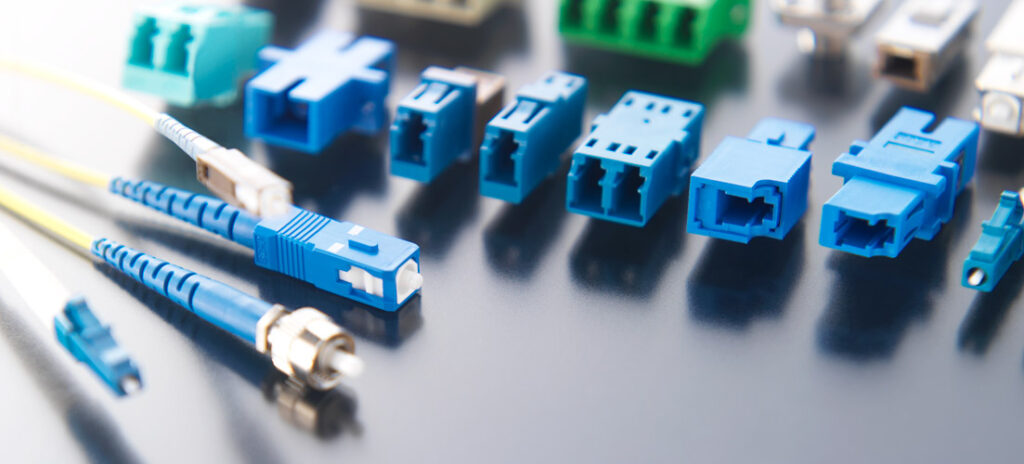Fiber optic connectors are rapidly becoming one of the fastest growing product lines on the market, covering a wide range of types to meet different needs. These connectors include single-mode, multimode, small form factor (SFF), multi-fiber, and application-specific connector types such as expanded beam, Mil-DTL-22876, and plastic optical fiber (POF) connectors.
In recent years, the number of connector manufacturers has increased dramatically as the demand for higher speed, greater bandwidth and distance, lower attenuation, higher security and higher resistance to electromagnetic interference has grown. This trend reflects the indispensable role of fiber optic connectors in modern communications and data transmission.
Among the connector types for single-mode and multi-mode cables, FC, SC, and ST are common choices. These connectors are ruggedly designed and have stable performance, and can meet the needs of various complex application scenarios.
Small form factor fiber connectors (SFF) are known for their compact design, with the sleeve size being only half that of SC fiber connectors. Among them, types such as LC, MT-RJ and MU are popular in the market, as they are not only small in size but also have excellent connection performance and reliability.

Multi-fiber connector housings, such as MT array types (MPO, MTP), further improve the efficiency of fiber connections. They allow up to 72 fiber connections at a single point, greatly reducing labor costs and physical space requirements, providing an ideal solution for large-scale fiber deployments such as data centers and telecom base stations.
Latest technological advances
As technology continues to develop, fiber optic connectors are also constantly innovating. For example, the emergence of hollow-core optical fiber technology has brought new breakthroughs to optical fiber connectors. This new type of optical fiber overcomes the physical limitations of solid-core optical fiber through the air light guiding mechanism, and can significantly reduce transmission delay and nonlinear effects. Its low loss and large bandwidth characteristics meet the basic needs of modern communications for optical networks.
In addition, the introduction of 25G PON (25 Gigabit Passive Optical Network) technology has also brought new challenges and opportunities to optical fiber connectors. 25G PON provides higher transmission rates and larger bandwidth to adapt to the needs of future communication networks. It introduces advanced wavelength division multiplexing (WDM) and time division multiplexing (TDM) technologies to improve network flexibility and capacity. The development of this technology has put forward higher requirements for the performance of optical fiber connectors, and has also promoted the continuous innovation of connector technology.
Wide range of application scenarios
Fiber optic connectors are widely used in many fields. In the communications industry, fiber optic connectors are key components for building fiber optic communication networks and are widely used in fiber optic transmission equipment, fiber distribution racks, fiber optic patch cords and other equipment and systems. In the IT industry, fiber optic connectors play an important role in computer networks and are used to connect servers, switches, routers and other equipment to achieve high-speed data transmission and network communications.
In addition, fiber optic connectors also play an important role in the medical industry, manufacturing industry, energy industry and other fields. In the medical industry, fiber optic connectors are used to connect medical imaging equipment, laser surgery equipment, etc., providing high-bandwidth and high-speed data transmission. In the manufacturing industry, fiber optic connectors are widely used in automation control systems, industrial Ethernet and other fields, providing stable data transmission and anti-interference performance. In the energy industry, fiber optic connectors are used to connect sensors, monitoring equipment and remote control systems, providing high-speed, long-distance, anti-interference data transmission solutions.
Fiber optic connectors are leading the trend of future communications and data transmission with their excellent performance and flexibility. With the continuous innovation of technology and the continuous expansion of application fields, fiber optic connectors will play an important role in more fields and contribute to the information development of modern society.










